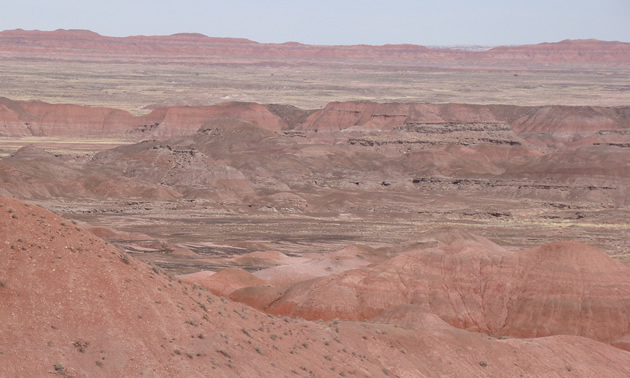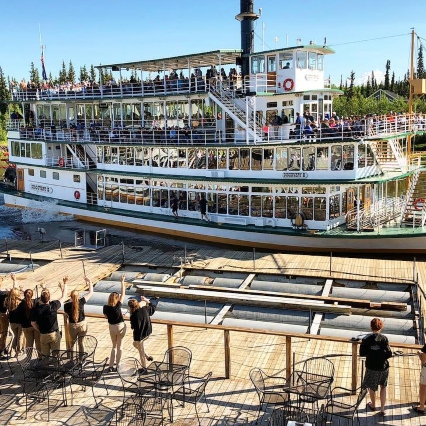Top things to see and do in Holbrook
Desert attractions both natural and man-made

Any town that is described as “too tough for women and churches” gets my immediate attention. The same applies to a former saloon called the Bucket of Blood. Unfortunately, only an old brick building remains of that landmark in Holbrook, Arizona.
When the Atlantic Pacific Railroad in 1881 reached the Little Colorado River, the station got its name from the chief engineer, Henry R. Holbrook. This is ranching country and that meant rowdy cowboys. The town’s colourful history includes 26 shootings in 1886, the 1887 Owens-Blevins shootout and the Pleasant Valley Range War.
Holbrook today has shed this notorious image and seems like a quiet little Arizona town of 6,000 with some major tourist attractions:
1) Petrified Forest
This is a 93,533-acre national park with an abundance of petrified logs. Park headquarters are 26 miles (42 km) east of Holbrook along I-40. Painted Desert Visitor Center at the north end and Rainbow Forest Museum at the south end each provide a good film that explains how the trees became petrified. The Chinle formation of the Triassic period 225 million years ago is the main geologic formation of the park, featuring a soft layer of mud, sandstone, volcanic ash, mesas, buttes and badlands. A paved road through the park is 27 miles (43 km) long, with major viewpoints at Blue Mesa and Jasper Forest. Off the road through the park there are hiking trails in the wilderness area, the Puerco Pueblo ruins and petroglyphs and Newspaper Rock, with 650 petroglyphs. In addition to petrified trees, there are numerous dinosaur bones and fossilized plants. There are plenty of stores in and around Holbrook selling petrified wood.
2) Painted Desert
This is the northern part of the Petrified Forest, as the Painted Desert extends northwest to Tuba City, including the Hopi and Navajo Indian Reserves. The Spanish name for the area was El Desierto Pintado, meaning colourful landscape. The 146-square-mile (380-square kilometre) desert is beautiful, with a multitude of colours including lavender, gray, brown, red and orange. For the most part, the landscape seems to stretch forever and is barren, austere and haunting.
3) Route 66 and Painted Desert Inn
This iconic highway built in 1926 stretches 2,488 miles from St. Louis, Missouri, to Santa Monica, California, and runs through Holbrook. Along the route, only two miles from the Petrified Forest, Herbert David Lore built his Stone Tree House, which became the Painted Desert Inn, now a National Historic Landmark. The Painted Desert Inn has historical connections to the Civilian Conservation Corps, which planted trees as part of Roosevelt’s New Deal, and the romance of Route 66. The Painted Desert Inn now serves as a visitor centre.
4) Wigwam Motel
This motel on Hopi Drive is unique, being shaped liked Indian teepees. There are seven similar motels across the United States listed on the National Register of Historic Places. Built in 1950 out of concrete and steel, there are 15 units, approximately 14 feet in diameter and 34 feet in height. Just as impressive are the antique 1950s cars displayed around the parking lot.
5) Historic Navajo County Courthouse
One of the first buildings erected in Holbrook was its courthouse. It served Navajo County for 78 years, from 1898 to 1976. Many famous criminals spent time in its jail. The courthouse now serves as a museum of local history, with courtroom and offices on the upper floors and the jail in the basement. Stories circulate that the courthouse has three or more resident ghosts who appear from time to time.
Holbrook is worth the visit. For RVers, the O.K. RV Park near I-40 is a excellent park that is close to shopping. Just to the north of Holbrook is the land of the Hopi, Navajo and Apache Indians. Holbrook is a good starting point to explore north or east into New Mexico.






